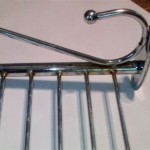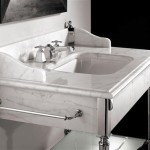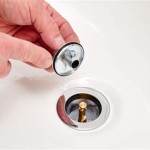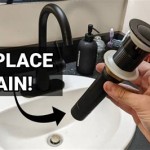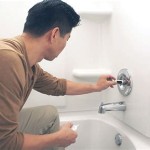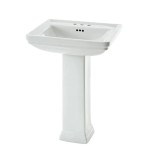Understanding the Hot Water Valve Under Your Bathroom Sink
The hot water valve under your bathroom sink is a vital component of your plumbing system. It controls the flow of hot water to your sink faucet, allowing you to easily adjust the temperature of the water. While it may seem like a simple component, a malfunctioning hot water valve can lead to various issues, including reduced water pressure, hot water leaks, and even scalding hot water. This article will delve into the anatomy, function, and common problems of a hot water valve under your bathroom sink, equipping you with the knowledge to identify and address any issues that may arise.
Anatomy of a Hot Water Valve
A hot water valve is essentially a shut-off valve that regulates the flow of hot water to your sink. It consists of several key components:
- Valve Body: This is the main housing of the valve, typically made of brass or chrome-plated brass. It contains the internal mechanisms that control water flow.
- Handle or Knob: This is the external component that allows you to turn the valve on and off. It is connected to a spindle inside the valve body.
- Spindle: This rod connects the handle to the internal mechanism, transmitting the turning motion of the handle to open or close the valve.
- Stem: This is a cylindrical component that seals against the valve seat to stop water flow when the valve is closed.
- Stem Packing: This is a gasket or seal that prevents water leakage around the stem. It usually consists of a compressible material like rubber or Teflon.
- Valve Seat: This is a circular surface in the valve body that the stem presses against to create a seal. It is typically made of brass or ceramic.
- Outlet: This is the opening where the hot water flows out of the valve and into the supply line to the faucet.
How it Functions
The hot water valve under your bathroom sink operates on a simple principle. When the handle is turned clockwise, the spindle rotates, causing the stem to move down and press against the valve seat. This creates a seal that prevents water flow. Conversely, when the handle is turned counterclockwise, the stem retracts, allowing water to flow through the outlet. The valve is designed to control the flow of hot water to the faucet, providing a convenient way to adjust the temperature of the water.
Common Problems with Hot Water Valves
Hot water valves, like any mechanical device, can experience problems over time. Here are some common problems that can arise:
- Leakage: A leaking hot water valve is a common problem, often caused by worn-out packing or a faulty stem. The leaking water can be a nuisance and can lead to water damage over time.
- Sticking or Jamming: The handle of the valve may become stuck or jam, making it difficult to turn the valve on or off. This is usually caused by mineral deposits or corrosion building up inside the valve.
- Reduced Water Pressure: A clogged or partially blocked valve can cause reduced water pressure. This happens when debris or mineral deposits build up inside the valve, restricting water flow.
- Noise: A hot water valve that is making noises, like rattling or grinding, can indicate a problem with the internal mechanisms. This noise may be caused by loose parts or worn-out components.
Addressing any of these issues promptly is crucial. Ignoring a problem can lead to further damage and eventually necessitate a complete valve replacement. The first step to addressing these issues is identifying the root cause of the problem, which often requires inspecting the valve itself.
Identifying the Problem
To identify the problem with your hot water valve, you should start by inspecting the valve itself. Here's how to approach the process:
- Visual Inspection: A visual inspection can reveal signs of obvious damage, corrosion, or leakage. Look for any cracks, leaks around the valve body, or any other signs of wear and tear.
- Check for Leakage: If you suspect a leak, turn on the hot water tap and carefully inspect the valve for any signs of dripping or seepage.
- Test the Handle: Turn the handle on and off several times to see if it operates smoothly or if it feels stiff or jammed. Also, check if the valve holds water properly when closed.
- Listen for Noise: Turn on the hot water and listen carefully for any unusual noises coming from the valve, such as rattling or grinding.
If you suspect a problem with your hot water valve, it's best to consult a plumber. They can accurately diagnose the issue and provide the appropriate solution, whether it involves repairing the existing valve or replacing it entirely.

Types Of Under Sink Shutoff Valves Kitchen Infinity

How To Install Water Shut Off Valve For Sinks
If I Turn Off My House S Main Water Valve Will That Stop The Hot Too Have To Change Kitchen Faucet Quora
How To Turn Off The Water Under Sink Without A Valve Quora

How To Turn The Water Off Under Sink

How To Turn Off The Water Under Your Sink Checkatrade

Guide To Under Sink Water Heaters
/product/25/477624/1.jpg?strip=all)
Generic Copper Angle Stop Valve Hot And Cold Water Quick Open Faucet For Bathroom Kitchen Toilet Sink G1 2 Best Jumia Egypt

How To Turn Off The Water Under Your Sink Checkatrade

How To Replace A Leaking Shutoff Valve Under Sink
Related Posts
